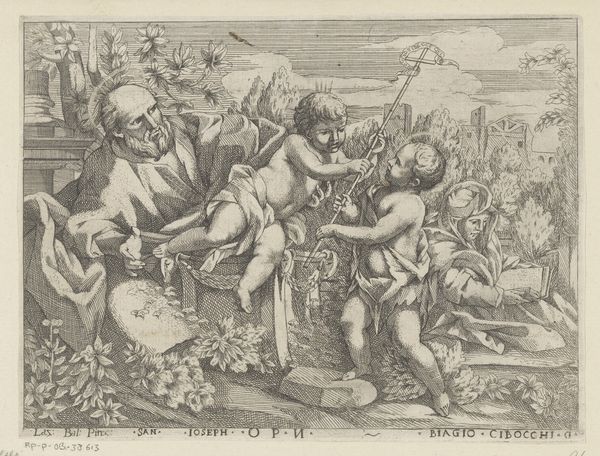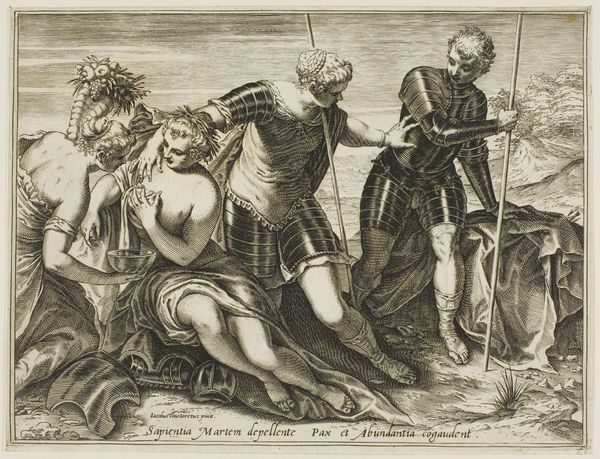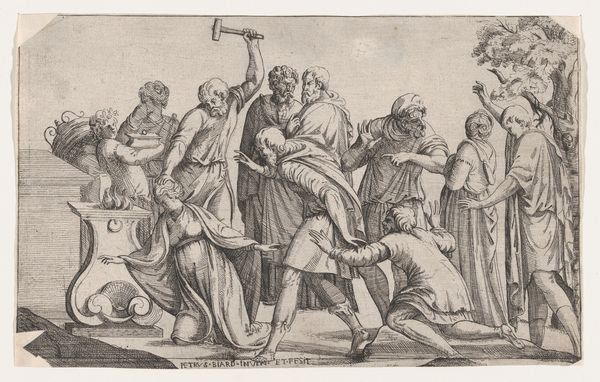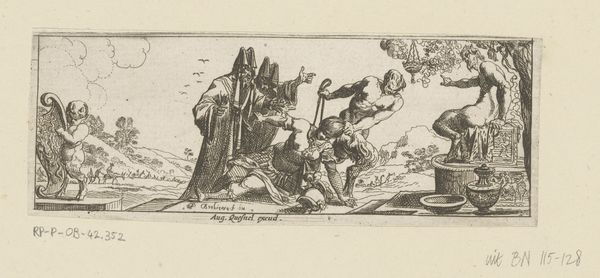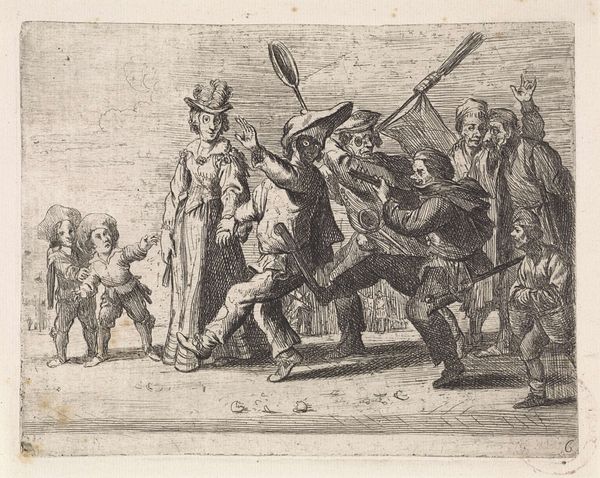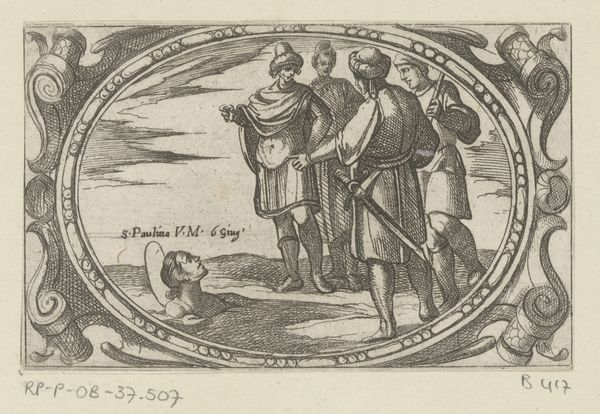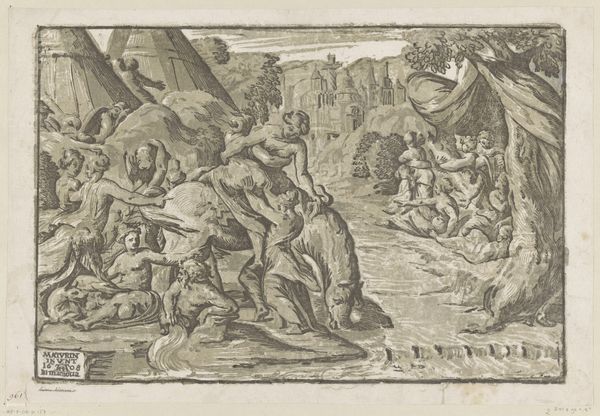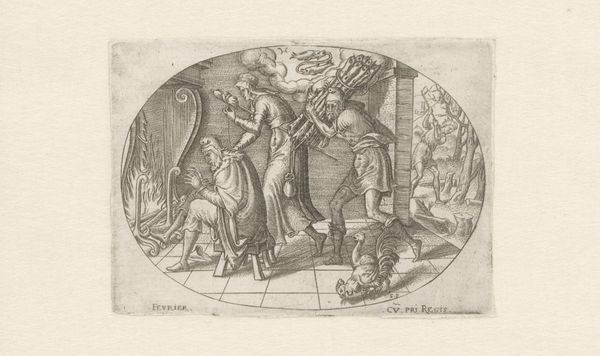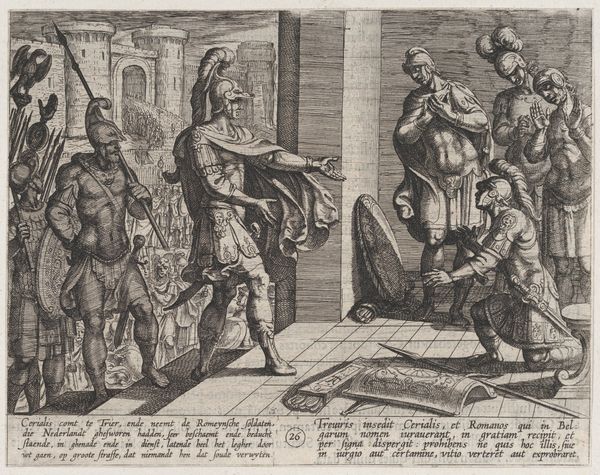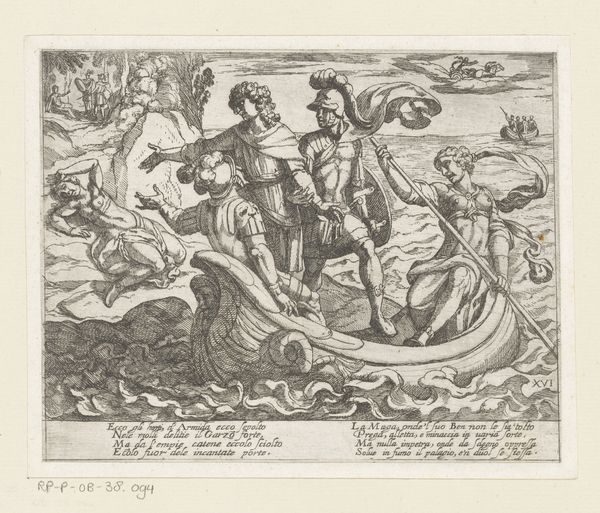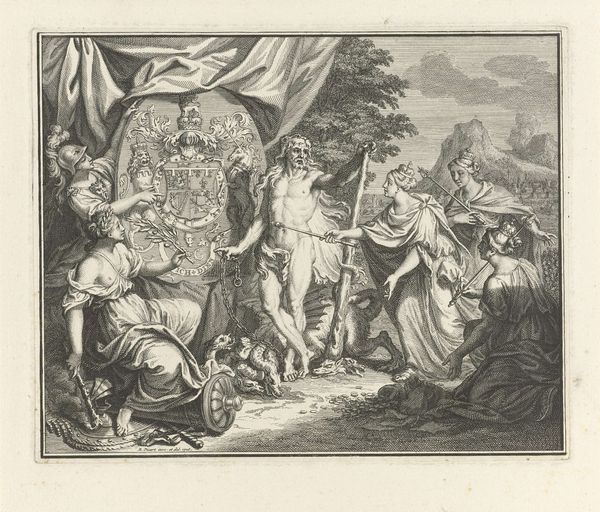
drawing, print, ink, engraving
#
drawing
# print
#
figuration
#
11_renaissance
#
ink
#
history-painting
#
engraving
Dimensions: Sheet (Trimmed): 3 7/8 × 5 15/16 in. (9.9 × 15.1 cm)
Copyright: Public Domain
Curator: This delicate 16th-century engraving, currently held at the Metropolitan Museum of Art, is entitled "Soror Domin Il." Its creator is anonymous, but its existence speaks volumes about the era's visual language. Editor: Ah, the beauty of line! It has an almost melancholic, pensive mood despite the somewhat martial figures populating the scene. Is she on a throne... being pulled through the clouds by disgruntled-looking soldiers? Curator: Indeed. The procession we see might allegorically reference dominion or a triumphal procession, particularly considering the crowned figure is prominently enthroned, carried, no less!—amidst the armed figures. Note the scepters and the elaborate costumes; those details signify authority and social position. Editor: I find it fascinating how the engraver uses such fine lines to create a sense of depth and texture. There's almost a ghostly quality about it, like a half-remembered dream of power and privilege. It does read a bit "old" with its flat scenery, however. Curator: Well, engravings like these served many functions – as illustrations for books, as disseminators of artistic ideas, or even as devotional aids. We must remember, in the 16th century, images functioned differently than they do now. Think about the symbolic power imbued within seemingly straightforward depictions. It becomes less about absolute realism and more about cultural communication through a set visual vocabulary. The attire alone echoes period understandings of military virtue alongside sovereign status. Editor: The 'visual vocabulary,' right. I suppose each detail contributes to the message—those elaborate helmets aren't just helmets; they symbolize militaristic strength. I suppose if you know what the artist is implying it reads better! I tend to forget history sometimes when just viewing. I wonder, too, about that fruit behind the sovereign's head, its potential symbolic loading within all the iconography! Curator: Precisely! Fruits frequently suggested prosperity, fertility, or divine favor. It may point towards the righteousness, or deserved nature, of the authority portrayed. Editor: Thinking about it all, what an insight into the beliefs and aspirations—not to mention, let’s be honest, propaganda—of its time. To look deeper at that visual language in total brings a different picture. Curator: Agreed. By deconstructing those coded visual elements, we gain a richer understanding of not just the artwork, but also the culture which generated it.
Comments
No comments
Be the first to comment and join the conversation on the ultimate creative platform.
